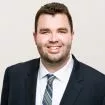The following arguments will be available to the public live, both in-person and through online audio streaming. Access information will be available by 9 AM ET each day of argument at: https://cafc.uscourts.gov/home/oral-argument/listen-to-oral-arguments/.
Monday, May 1, 2023
Inguran, LLC v. ABS Global, Inc., No. 22-1385, Courtroom 201
Inguran, dba STGenetics, ("ST") asserted U.S. Patent No. 8,206,987 ("the '987 patent") in the Western District of Wisconsin against ABS Global ("ABS") alleging induced infringement. However, ST had asserted the '987 patent against ABS six years earlier, alleging direct infringement. In that case, ABS stipulated that its GSS system for sorting bull semen by sex directly infringed the '987 patent and ST was awarded a lump sum for past infringement and an ongoing royalty of $1.25. ST's present suit alleges that after the final judgement in the first suit, ABS sold its GSS system to third parties and thereby induced infringement through those third parties' use of the system. The same district court that presided over the first case, found that the induced infringement claim was barred by claim preclusion because third party licensing was considered and accounted for in the ongoing royalty award from the first trial.
On appeal, ST argues that the induced infringement claim could not have been brought in the first trial and the ongoing royalty from the first trial only covered products sold by ABS, not third parties. ST argues that the acts of induced infringement and direct infringement reside in two distinct sets of "transactional facts." According to ST, only ABS's pre-commercialization conduct was litigated in the first suit on direct infringement. It was not until after final judgment in the first case that ABS's acts constituting induced infringement (licensing the GSS system to third parties) became ripe for a claim. ST argues that the ongoing royalty awarded in the first suit had to be "narrowly tailored" and could only reach acts actually litigated in the first case, i.e., direct infringement. Furthermore, ST asserts that that the plain language of the ongoing royalty did not reach licensing deals or third-party sales. Therefore, ST contended that its induced infringement claim should not have been barred by claim preclusion
ABS responds that the same transactional facts could have been and were litigated in the first action because ST sought and obtained forward looking injunctive relief in the form of an ongoing royalty. ABS argues that ST had two choices in the first case: seek and obtain relief for ABS's past direct infringement or seek and obtain relief for ABS's future commercialization of the infringing technology. ST chose to seek relief based on future conduct. ABS also asserts that discovery in the first suit revealed ABS's licensing plans and that ST's damages expert touched on these plans in his testimony. Thus, according to ABS, its future commercialization plans were part of the "transactional facts" actually litigated in the first trial. Additionally, ABS argues that the ongoing royalty covers ABS's licensing program because the normal principles of injunctive relief prevent the enjoined party from carrying out the enjoined acts through third parties. Therefore, the claim for induced infringement is barred by claim preclusion and the ongoing royalty applies to products both sold by ABS and made by ABS's licensees.
Tuesday, May 2, 2023
XR Communications, LLC v. ARRIS Solutions, Inc., No. 22-1125, Courtroom 402
XR Communications, LLC (dba "Vivato") filed multiple suits in the Northern District of California accusing Ruckus and ARRIS (collectively "Ruckus") of infringing U.S. Patent No. 6,611,231 ("the '231 patent"). The cases were consolidated after resolution of an IPR where the '231 patent was found not invalid. In the consolidated action, the parties disputed whether the term "search receiver logic" should be construed as a means-plus-function term and subject to 35 U.S.C. § 112, ¶ 6. The district court found that the term was governed by § 112, ¶ 6 despite not containing the term "means." The district court then found that the specification failed to disclose sufficient structure to perform the claimed function, and that "search receiver logic" was indefinite.
On appeal, Vivato argues that the district court erred by requiring extrinsic evidence to show that a skilled artisan would have understood how "search receiver logic" performed the claimed function. Vivato also asserted that the district court erred in holding that a term conveying a "known class of structure" to a skilled artisan is no longer sufficient to avoid the application of § 112, ¶ 6. Vivato further argues that, even if § 112, ¶ 6 does apply, the court erred by finding that the term "search receiver logic" was indefinite. Vivato explains that, contrary to the district court's decision, Federal Circuit precedent makes clear that "a critical question" in determining whether § 112, ¶ 6 applies is whether a claim term identifies "either a particular structure or a class of structures." According to Vivato, the specification's disclosure of a "search receiver" alone shows sufficient structure to perform the recited functions, which is further bolstered by expert testimony.
In response, Ruckus argues that the district court performed a "textbook application" of the means-plus-function standard. To support this argument, Ruckus asserts that the correct inquiry for whether a term is governed by § 112, ¶ 6 is not whether it alone recites "any structure" or "class of structures," but whether the disputed term identifies to a skilled artisan a structure capable of performing the claimed function. Ruckus argues that the Federal Circuit has previously rejected Vivato's "any structure" argument and that the district correctly found the disputed term was governed by § 112, ¶ 6. Finally, Ruckus contends that the district court correctly relied on the patent specification and expert testimony to find that the specification fails to identify sufficient structure to perform the claim functions and that the claim term is indefinite.
Wednesday, May 3, 2023
Sisvel International S.A. v. Sierra Wireless, Inc., No. 22-1495, Courtroom 402
Sierra Wireless, Inc. ("Sierra") filed a petition for an inter partes review of U.S. Patent No. 8,879,503 ("the '503 patent") after Sisvel International S.A. ("Sisvel") filed multiple suits against Sierra customers alleging infringement of the '503 patent. In the IPR proceeding, Sierra argued that the '503 patent's claims would have been obvious over references from members of 3GPP, a cellular telecommunications standard-setting organization. Sisvel disputed the public accessibility of these references. The Board's final written decision found that the references were publicly accessible and that the disputed claims would have been obvious.
On appeal, Sisvel argues that the Board's final written decision was arbitrary and capricious because it did not apply the correct standard for determining whether a reference was sufficiently publicly accessible to qualify as prior art. Sisvel argues that the references must have been "disseminated or otherwise made available to the extent that persons interested and ordinarily skilled in the subject matter or art exercising reasonable diligence, [could have] locate[d] it." Sisvel argues that the Board's definition of a skilled artisan does not include knowledge of 3GPP's publication methods and therefore expert testimony provided "incontrovertible evidence" that, even today, a person of "extraordinary" skill in the art could not locate the references after a diligent search.
Sierra argues in response that the Board recited and applied the correct legal standard when evaluating public accessibility. Sierra also argued that the Board's decision should be reviewed for substantial evidence support or for being arbitrary and capricious because Sisvel admitted that the Board referenced the correct legal standard in its decision. Sierra also argues that the Board considered Sisvel's evidence and expert testimony that a skilled artisan would be unable to locate the references today, but merely found them unpersuasive over evidence that the references were publicly accessible before the critical date.
The content of this article is intended to provide a general guide to the subject matter. Specialist advice should be sought about your specific circumstances.


